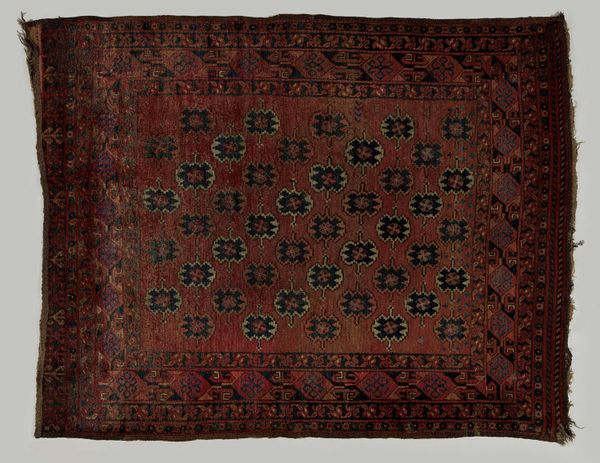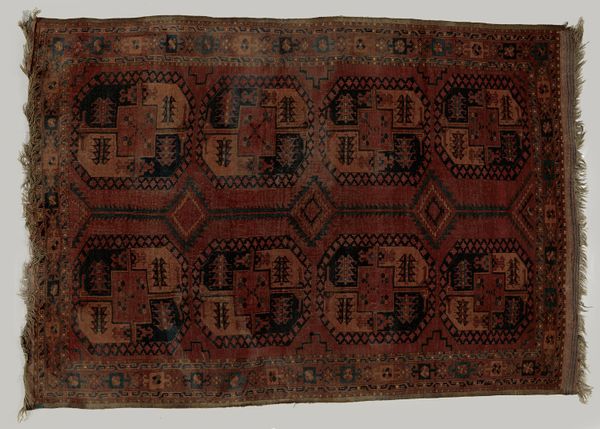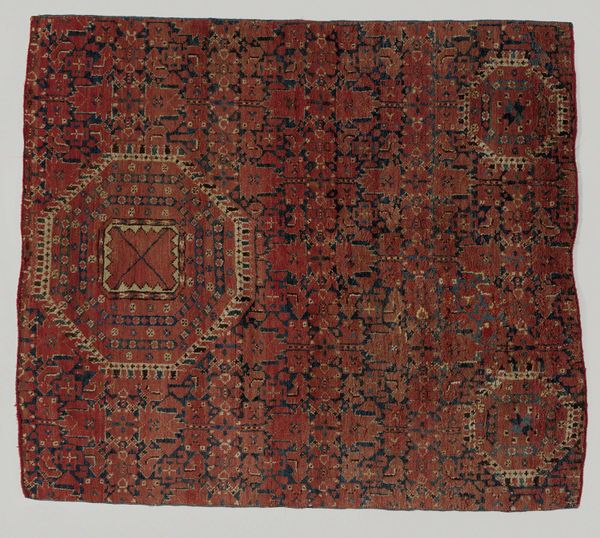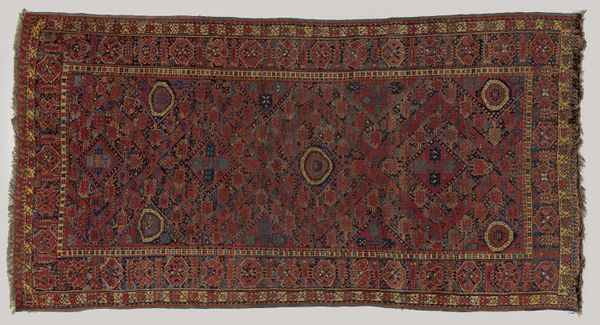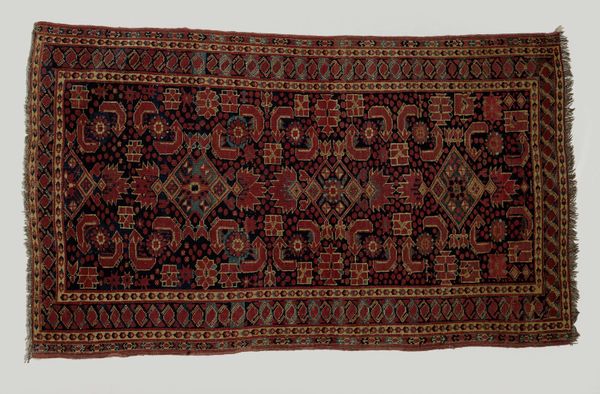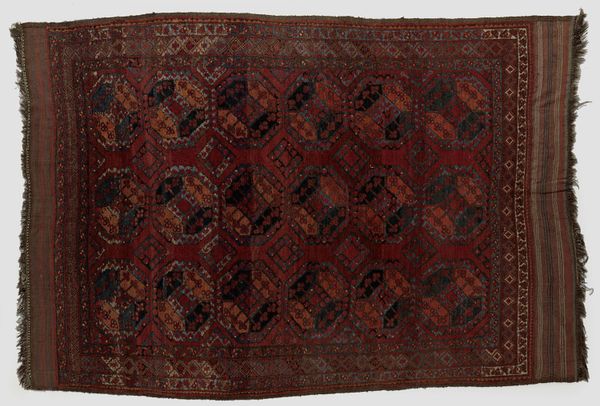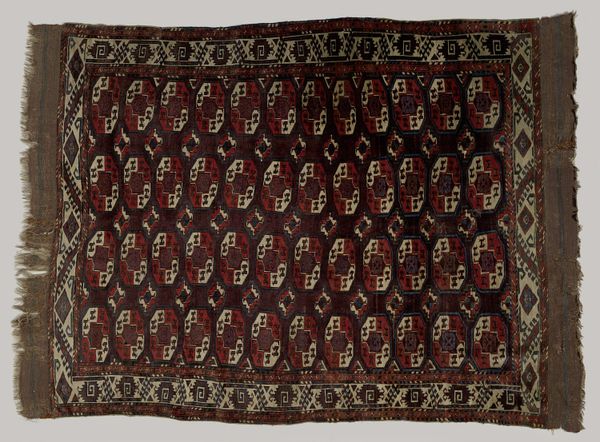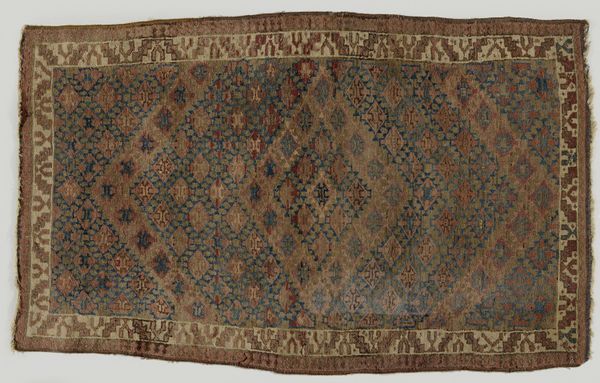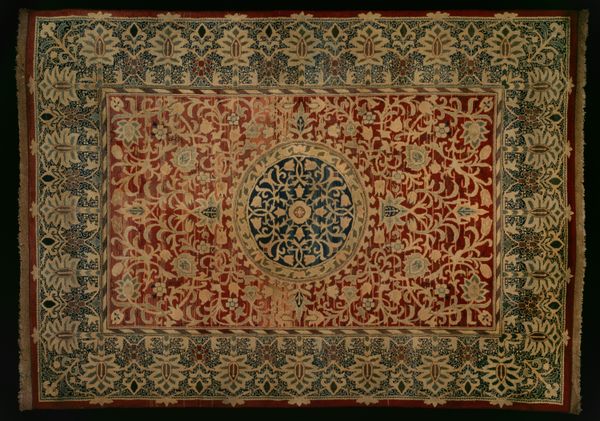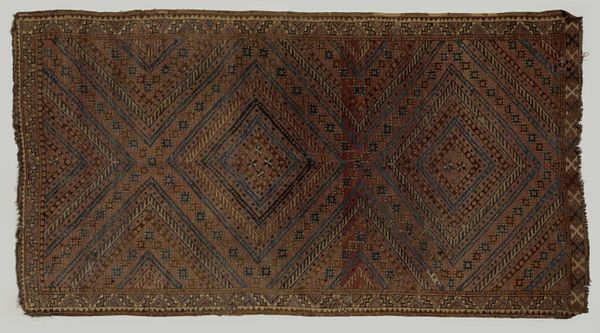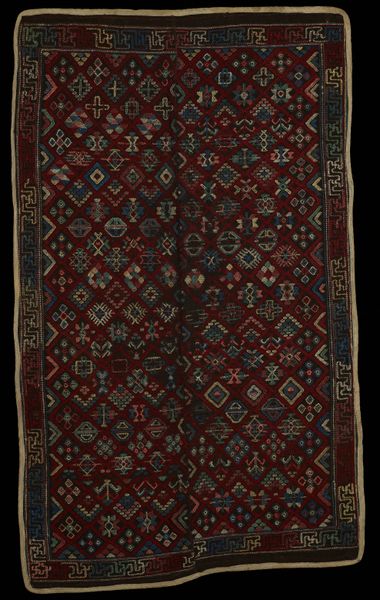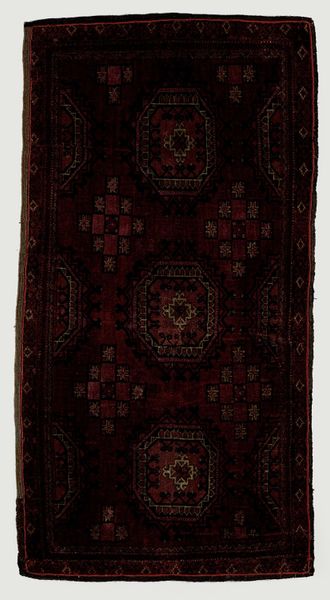
fibre-art, weaving, textile
#
natural stone pattern
#
fibre-art
#
weaving
#
textile
#
fashion and textile design
#
hand-embroidered
#
geometric
#
fabric design
#
repetition of pattern
#
regular pattern
#
pattern repetition
#
islamic-art
#
textile design
#
imprinted textile
#
layered pattern
Dimensions: height 183 cm, width 148 cm
Copyright: Rijks Museum: Open Domain
Curator: This remarkable textile, an "Oosters Tapijt," or "Eastern Carpet," dates roughly from 1800 to 1900 and was crafted by the Ersari people. Editor: It strikes me as an object born from constraints. The limited palette—mostly shades of red and brown—combined with that rigid, geometric patterning, lends it a kind of austere beauty. Curator: Indeed. Consider the labor involved in creating such intricate patterns by hand. This carpet represents not only an aesthetic creation but also the application of immense time and skill of its weaver and the conditions surrounding the production. Were the dyes locally sourced? Was this weaving for personal use or for trade? Editor: And observe how those repeated geometric motifs establish rhythm and visual interest. The primary shapes read almost as highly stylized figures. How do the borders play against the central field? What are the relationships between shapes within the frame? The interplay establishes an incredibly compelling composition. Curator: Precisely. Moreover, such textiles were vital commodities along trade routes. They weren't merely decorative but functioned as crucial assets in complex systems of exchange. Investigating the availability of specific materials like wool and dyes could uncover far-reaching trade networks across Central Asia at that time. Editor: Though the muted color palette provides a foundation, the geometric patterning on the field, along with the varied, contrasting borders create tension that enhances visual intrigue. Do the patterns themselves represent specific tribal affiliations or spiritual beliefs? The use of repeated symbolic forms adds layers to unpack! Curator: We could trace how particular weaving techniques were transmitted and adapted across different communities or reflect how production served to reinforce Ersari social structure. It offers so much insight. Editor: I am taken by its beauty. Looking closely helps me unravel it. Curator: An extraordinary testament to material culture! Editor: A study in form.
Comments
No comments
Be the first to comment and join the conversation on the ultimate creative platform.
